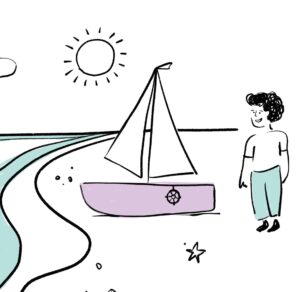Meditation uses a variety of techniques to help you quickly calm your body and mind. This can be done through a short spot meditation such as pausing and taking a few breaths. Or you could practicing focusing your attention for a minute, or engaging in a longer meditation which may last 20 minutes.
Meditation
You can meditate sitting, standing, laying down, moving, or staying still. Explore various types of meditation to get a feel for what you get the most benefit from. Once you have chosen the position, it is a process of calming both your breathing and your mind to help you to disengage from the usual mental chatter that we experience. Using visualisation techniques, focus on your breath, on body sensations. These can be processes you guide yourself through, or that someone else leads (either in person or through a recording).
Calm your body and mind
People use meditation for different reasons. However, many people find meditation is a great tool to help them relax, regulate emotions, and be more mindful and purposeful in their day. I once heard it described as dental floss for the brain. This resonates with me because, through meditation, I clear out some of the waste and gunk that clogs my mind, restoring a sense of clarity.
Aim of relaxation based meditation
The primary aim of relaxation based meditation is to focus on your body sensations while relaxing muscle tone and stress. This can be fabulous, especially if you experience muscle tension leading to pain or sleep disturbance.
Relaxation does not require your mind to do anything. Although, you may become so relaxed that your mind naturally calms. You may even become sleepy. Meditation is a way of relaxing both the body and focusing the mind as well as releasing muscle tension in the body. Meditation specifically works on releasing attachment to our mental processes so that we can truly relax wholly.
Mindfulness
Mindfulness is a term used very broadly in today’s vernacular. It is generally used to refer to a state of awareness or alertness. Awareness of your emotions, your body, your thoughts, your words, your actions. The general goal of mindfulness is to get people to switch off their auto-pilot and to engage fully and presently in what they are doing / who they are with / what they are eating / what they are saying. Mindfulness is about attention to the moment, rather than rehashing the past, or rehearsing the future.
Results
You may see results very quickly through a simple three sigh spot meditation that can help to calm and relax you in the moment. Like with many activities, the more you practice and learn what types of meditation suits you best, the more you integrate it into your life, the more benefits you are likely to experience.
Racing thoughts
Many people claim that they can’t meditate because their mind is too busy. However, a racing mind is a great reason to learn to meditate. You don’t have to stop the racing thoughts. Rather, you learn techniques and build skills to be able to notice the racing thoughts without being as engaged with them. The idea is to have more capacity to observe your mental processes, rather than be driven by them.
Meditation can be done anytime or anywhere
Cognitive research suggests that it’s one of the best things you can do for your mental health and wellbeing!
There are some people who relish longer meditations, meditating for twenty-minute (or more) sessions every day. However, you don’t have to do that if you prefer to do smaller meditations.
Try this
Sit for a few minutes and let your mind wander naturally; take a deep breath and sigh out when moving from one activity to the next; use deep and deliberate breathing every time you get a red light while driving your car; use the time in an elevator to be still and focus on the buttons lighting up as the elevator moves through the floors. The trick is to work at not engaging with any thoughts that may be wafting through your mind.
Develop your capacity to be still, to be mindful, to not be dragged mentally through the day. Instead, choose where you put your attention. Give your brain some attention breaks.
It’s not dental floss, in this case, it’s mental floss. It’s as good at cleaning out the mess in your brain as dental floss is at preventing cavity and decay for your teeth.
Start to calm your body and mind
Listen to our free meditations and download the app Insight Timer, our recommendation for assisting in sleep, anxiety, and stress.
-
 Engaging with Empathy & Compassion | eLearning Course$330.00 inc.GST
Engaging with Empathy & Compassion | eLearning Course$330.00 inc.GST -
 Building Buoyancy | eLearning Course*$180.00 inc.GST
Building Buoyancy | eLearning Course*$180.00 inc.GST -
 Workplace Mental Health for Leaders | eLearning Course + Assessments$770.00 inc.GST
Workplace Mental Health for Leaders | eLearning Course + Assessments$770.00 inc.GST



